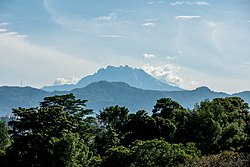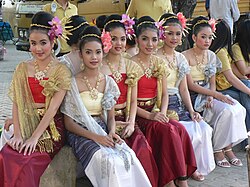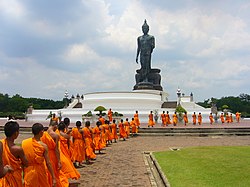Ankat
Socialist Republic of Ankat | |
|---|---|
| Motto: ටෙරාස් කෝල්ගේ ආලෝකයෙන් අපි නැගී සිටිමු "ṭerās kōlgē ālōkayen api nægī siṭimu" "In the light of Teras Kol we stand" | |
| Anthem:
අපි ඔහුගේ ප්රතිරූපය තුළ වැඩ කරමු "api ohugē pratirūpaya tuḷa væḍa karamu" "We work in his image" | |
| Capital | Nilagne Naegima |
| Official languages | Terasi |
| Recognised national languages | Oshi |
| Recognised regional languages | 8 languages |
| Demonym(s) | Ankati (International) Janatāva (Domestic collective) |
| Government | Unitary one-party socialist republic |
| Suneshka Iriyagolla | |
| Eshan Silva | |
| Head Bitch | |
| Legislature | National Assembly |
| Formation | |
• Lily Revolution | 3 August 1895 |
• Socialist reformation of government | 8 September 1948 |
| Population | |
• 2019 estimate | 63,895,000 |
| GDP (nominal) | estimate |
• Total | $1.429 trillion |
• Per capita | $22,371 |
| Currency | Tepis (TP/В₽) |
| Date format | dd.mm.yyyy |
| Driving side | left |
| Calling code | +53 |
| ISO 3166 code | ANK |
| Internet TLD | .msv |
Ankat (Terasi: අන්කට්), officially the Socialist Republic of Ankat (Terasi: අන්කට් සමාජවාදී ජනරජය)
History
Jhewipinni Kingdom
In the most widely agreed-upon version of the origin of the Jhewipinni Kingdom, the foundation of the kingdom occurred very early into the 7th century BCE by Shatrughatin at the then-township of Jewipin. Under a vassalage system, King Shatrughatin ruled over self-governing principalities and tributary states that, while able to operate with large freedoms, owed tribute and allegience to the King of Jhewipinni. The Kingdom's initial wave of expansion followed the marriage between King Shatrughatin's son and the princess of the Visphu Kingdom, that was absorbed into the Jhewipinni as a result. The Kingdom underwent several periods of afterwards expansion which culminated in the early 5th century conquest of the Balung tribes peoples. Among those now within the Kingdom's territory was Teras Kol, who had already laid the foundations of the Margaya faith.
Bayarid era
Mutulese era
Geography
Climate
Government and politics
Ankat is a unitary one-party socialist republic, created after the successful people's revolution of 1948 over the previous democratic republic. While Ankat officially remains committed toward the ideals of socialism politically and culturally, it's economic policies have begun to grow increasingly capitalist with trade agreements with monarchist countries in Belisaria dating back to the 1960s have made it one of the economic centers of Ochran. In the Socialist Constitution of 1950 the People's Party of Ankat (ANP) asserts total rule over politics and society. The country's President is the head of state, commander-in-chief of the military, and the chairman of the ANP. The office of the president is the highest office in Ankat and is responsible for making executive decisions for state appointments, setting policy, commanding the military, and forming a government. In this same position as the chairman of the ANP, the president is also responsible for ensuring the national harmony and through the party's propaganda minister has direct control over the state news agencies.
The Prime Minister is the head of government and presides over the council of ministers appointed by the president. The council is composed of five deputy prime ministers and the heads of the ministries and commissions that make up the government's central structure. Typically each minister will be a full member of the ANP, although sub-groups of the party - including the Babilan Unionists - have been known to be represented in the council. Endorsements to the president for possible candidates must be earned, although these can come from the president directly. In the constitution it is described that each member of the party represents a part of the community as a whole, and that by being representative of the society are the guardians of the national harmony.
The National Assembly of Ankat is a Unicameral Legislature body composed of 450 members. The assembly is open to all parties in the country and is headed by the Great Speaker who is typically the third highest member of the ANP. The National Assembly is superior to the executive and judicial branches of government and is typically the place from which government ministers are appointed from. The Supreme Court of Ankat, headed by a chief justice, is the country's highest court of appeal, although it is answerable to the national assembly and has no powers over the creation of laws. Provincial courts and administrative bodies are below these two legislature and judicial bodies and outside of having to obey party and national decrees, laws, and the national harmony, have a degree of flexibility in self governance.
While the constitution forbids any party other than the People's Party of Ankat from holding power, a multitude of parties exist within the National Assembly. The other major political parties in the country include the Babilan Union and the New Dawn, both socialist parties highly dominant in their own regions. Following the 1948 revolution the government had initially suffered from a series of missteps that saw it quickly starting to turn into a military junta, as the initial president Dushan Premadasa was found to be supportive of the exiled royal family, which was ousted in 1895 by the Lily Revolution that created the Democratic Republic that was at the time of the 1948 revolution rated the sixth most corrupt government in that period.
The People's Party of Ankat is, by way of the constitution, the most powerful political party in the country. It is tied directly with the government to a point that the only way to get into a government position is to be a part of the party, and membership of the party is often wide-spread throughout the police and military as well. Threats to the party are often swiftly ended, such as when Ranawaka Cooray, leader of the short-lived Party for the liberation of Ankat was arrested by police and went missing after holding a rally in his hometown of Turmore.
The idea of national harmony and a long culture of submission and peace among national citizens have meant that elections in the country are often one-sided, as party members will employ means to uphold the 'national harmony' to keep the People's Party of Ankat the dominant political force in the nation. International observers have noted wide-spread fraud, ballot stuffing and voter intimidation utilised during elections. The military has been used since 1985 to ensure high turnouts, with the 2015 election having a confirmed 89% turnout.
Foreign relations
Military
The Ankat Armed Forces (AMSH) consists of the Ankat People's Army (AMH), Ankat People's Navy (AMNH) and the Ankat People's Air Force (AMGH). The Armed Forces as a collective is referred to as the Socialist People's Armed Forces. The three primary services of the Armed Forces is further subdivided into the Ankat Coast Guard (AV), Ankat Border Guard (ADA) and the Ankat People's Civil Defence Force (ASAB).
The Armed Forces, officially known as the Ankat People's Armed Forces (අන්කට් මහජන සන්නද්ධ හමුදා), was created in the aftermath of the 1948 revolution. Before the reforms it was called the Ibid Free Army formed by socialist rebels against the Democratic People's Republic that came to life in 1895 and had within 5 years successfully gone against everything it had set out to achieve when it took power following the Lily revolution. The massacre at Ibid following a meeting of socialist-minded peoples in the village in 1901 is what started the IFA's existence, as survivors and sympathisers quickly rallied to a common cause.
The military of Ankat can trace it's origins to two distinct sources; First, the Sapphire Guards (නිල් මැණික් ආරක්ෂකයෝ) of the Turgaran Kingdom that was the first professional soldiery in modern-day Ankat dating from 482 to 950. The second source are the Three Fingers (ඇඟිලි තුනක්), a volunteer band of villagers who rose up to defend the Margaya monks of Chesar in 1540. Bandits had raided two nearby monasteries and maimed the monks by cutting off the middle, ring, and pinky finger leaving only the index and thumb remaining. The villagers named themselves after the lost fingers and, with the training of the small cadre of warriors the monks had, successfully defeated the bandits and laid the foundations of a militia force that would be at the call of the monasteries to defend them in dire need. The monks' warrior cadre itself dates back to the time of Teras Kol when warriors of the Jhewipinni kingdom converted to be his followers and became the monasteries guardians ever since.
While the Sapphire Guards of the Turgara were the first professional soldiers of Ankat, it was during the Walpoli era (1420-1682) that the first professional army of Ankat emerged. While it's light soldier battalions were still levied, the vast majority of the army was maintained by paid, professional soldiers that lived in the fortresses surrounding the capital Walpol with their families.
Administrative divisions
Human rights issues
Economy
Agriculture
Science and technology
Infrastructure
Power
Transport
Demographics
Ethic Groups
Culture
This section includes participation of other members of Ajax that has not yet been confirmed or sought out and is, therefore, to be considered WIP and to-be-confirmed.
The national culture of Ankat has evolved greatly over time, from it's isolationism whilst ruled over by it's monarchy during the Walpoli era, to the rapid influx of trade and immigrants after Mutulese conquest of Ankat. Following the withdrawal of Mutulese imperialism in XXXX, the Ankat Republic of the Attunippi era absorbed influences from all over Ochran and some from western Scipia. Strong Tsurushimese, Fahrani, Mutulese, and other influences are still evident in traditional and modern Ankati culture. Modernisation brought in by traders from Oxidentale, Norumbria, and chiefly Belisaria played a significant role in shaping it's modern culture.
Traditional cultures of the nation are typically colourful and are often followed during festivals, religious occasions, or family events such as weddings and birthdays. The Kunu (කුණු) is a form of traditional dress exclusive to women and is made from silk or handwoven cotton. It comes in many different textures and designs, often having regional focuses in design and can vary in extravagance. Formal Kunu are often accompanied with specific hair-styles, golden embroideries and jewels, with rich families often having a sigil of their family or the names of their ancestors woven into their clothes. The Kunu is also seen in a 'dressed-down' format worn for every-day use, often simply being made from handwoven cotton and a uniform variety of colours.
The closeness of the people to Margaya is often seen with villages primarily having their evening meals in the Margaya Temples and the cultural practice of eating together and treating eachother in close friendship being born from Margaya itself. The traditional greeting between Ankati is generally offered by an individual holding their hands flat together and fingertips pointing upward in what is recognisable as a prayer gesture. They will then bow their head until their fingertips meet their forehead. The greeting, known as Sāmaya (Peace) is a sign of respect and good-will to one another and is not restricted to Ankati only or to followers of Margaya. Greetings to strangers, following the culture of familiarity and closeness, has women being called Sahōdariya (Sister) and men Sahōdarayā (Brother) until their name is known.
This model of closeness also extends to funerals, which traditionally last for a week. Margaya faith discourages crying during the funeral and activities during the funeral and in the week of it are intended to promote happiness, acceptance, and to celebrate the life of the deceased as opposed to mourning their loss. The vast majority of funerals in Ankat from 1950 to 2005 were cremations (97.5%). Margaya temples will then store the urn in burial mounds which are typically covered in either fresh, maintained grass or colourful flower arrangements. Funeral services in Margaya faith styles are not limited to humans. Funerals for animals are common, with organisations such as the Ankat Military having working animals cremated with honours for their service. This method of funeral does not apply to the large elephant community in the country because of a few reasons; A fully grown elephant can weigh between 2,700 kg to over 4,000 kg and elephants have long been noted to perform their own funeral rites and stages of mourning. Therefore the elephant bodies are moved to designated sites in the elephant refuges in the country and foilage is made available for the elephants companions to cover the body with. If the elephant has no companions, the body is still moved to one of these sites and is buried by the refuge staff. Incense burning around the body can be mandatory as the body decomposes, but in most cases when the elephants mourning the body leave for the final time the elephant will then finally be buried. Tigers are a known problem for this method of burial as they are often attracted by the scent and clustered elephants. In such circumstances when either monks or rangers determine that a tiger problem will arise the body will be buried or in extreme cases disposed of. In all cases of elephant burials, hair from the elephant is kept and taken to a Margaya temple.
Elephants have a special place in the traditions of Ankat, which hold the Elephants as highly respected creatures which are used as working creatures both in civilian life and in the military, but since the 14th century have been almost exclusively kept away from combat or dangerous work. One such instance is the place of āḍambara yōdhayā (The Proud Giant), the matriach elephant of the herd residing in and around Bhagyavatun Vahanse. In Margaya custom, āḍambara yōdhayā is often adorned with wreathes made of flowers during ceremonies and her and her herd are exclusively looked after by the monks. The origins of āḍambara yōdhayā come from the elephant of Teras Kol himself, which after Teras' death stood guard over his burial mound.
Modern culture in Ankat is itself considered a wholly different animal to the traditional cultural ways of the country and is considered to be far more compatible with international life to a point where it is more prominent in the cities, coastal communities, and industrial heartlands of the country. The practice of eating together can be highly impractical in cities and also where working schedules may not equate to the same times for dinner. Funerals are held as normal, but activities are typically restricted to weekends or compressed into as few days as possible to reduce time off work. While many people are seen out and about in Kunu, Belisarian clothes are far more prominent and the fashion industry of Nilagne Naegima has become a beating heart of Ochran modern fashion trends.
Religion

Ankat's most prevalent religion is Margaya (මාර්ගය, lit. 'The Way'), which is also an integral part of the Ankati identity and culture. The connection between the people of Ankat and Margaya is prevalent in every-day life to an extent that in a 2005 census 98% of the country's population self-identified as Margaya in one of two emerging sects - An active participation in the religion and a passive participation which allows the person the ability to convert to other religions and still be considered a 'part' of the Margaya faith, as the defining tenets of Margaya is easily interpreted as a "love of all and an acceptance of all". Monks of Margaya worship at monasteries around the country and the world, offering interpretation of the Tenets of Teras Kol (ටෙරාස් කෝල්), the first spiritual leader of Ankat believed to have lived in the 5th century BCE. The Margaya faith is centered around Bhagyavatun Vahanse (Blessed City), which is the world's largest religious site and was
As previously stated, the tenets of Margaya allow the existence and participation of it's own practitioners in other religions if they so desire. As a result other religions, such as Albanism and XXXX also exist in the country. Albanism is mostly concentrated in the country's south-western most provinces.
In the socialist constitution of 1950, the state recognises the prevalence of Margaya and it's place as the state's primary religion through popularity and it's integration with the people's culture and national identity. It does, however, state that the people of the nation may be free to practice religions to their own desires so long as it does not provoke 'rebellious intentions against the state or cause one to begin disturbing the national harmony'. In practice, this allows religious organisations free license to operate in the country and missionaries are present in large numbers throughout the nation. While the nation has a highly questionable human rights record and reports of abuses are common, it is notable that no widespread reports of abuses or discrimination directed toward religious missionaries or people of other religious beliefs not associated with Margaya exist. This has been put down by multiple sources as a direct result of Margaya's tenets toward religious acceptance.
Cuisine
Ankati cuisine is made up of a large variety of regional and traditional cuisines. Cuisine differs across the country as a result of variation in geographical location (proximity to sea, mountains, plains) and economics. It also varies seasonally, depending on what fruits and vegetables are ripe. The usage of spices and rice in food preparation is common throughout all varieties of Ankati food and for some dishes the preparation is the same regardless of type of meat used (pork, chicken or beef.) A notable difference in preparations only exists in regards to fish, which are typically cooked with honey, fruits and typically without rice.
One of the most popular types of cuisine that Ankat has to offer comes from the Bibila province which is widely considered the agricultural center of the nation. Bibila is highly abundant in whole grains, vegetables and fruits. Bibilan cuisines can vary significantly depending on if it's home-cooked or made by a restaurant. Restaurant-style Bibilan cuisine often puts an emphasis on a creamy, rich texture using ghee, butter and cream while home-cooked meals often center around whole wheat, rice and either garam or masala flavored ingredients. The usage of pasta has grown since being introduced to the country from Latium. Local Bibilan courses include yogurt-based roti, daal and dahi often served with chutney and a light salad.
Common Babilan dishes are also abundant with local and seasonal vegetables often sauteed with spices such as cumin, dried coriander, red chili powder, etc. The mixing of tea with spices results in Masala Chai, a favorite drink of many in Ankat and is considered a part of the national diet. Bibilan food is considered highly versatile and many differences can be found throughout the country with differing food combinations, spice combinations, the absence, increase, or difference in fruits and vegetables used in cooking.
The drinking of tea is incredibly common throughout Ankat. One of the main tenets of Margaya goes against intoxication, and as a result as many as 74% of the population can be considered as teetotal. Ankat is one of the world's largest producers of tea, and varieties of tea grown include Assam, Nilgiri and Tarak tea which is often drunk by Margaya monks during ceremonies. The preparation of Tarak Tea, involving a mixture of water, milk and spices often mean that in homes it is produced in a large batch in a vessel known as a Tappid which cycles heat to keep the brewed liquid hot while also being enclosed to keep flies or other water-borne insects from gaining access to the tea. It is considered an Ankati ancestor to the kettle. Coffee is another popular beverage of Ankat and is cultivated in the southern provinces.
Cultural dining etiquette in the country has largely remained the same for the centuries. In most families, as opposed to individual dishes outright larger quantities of rice or other 'base foods' will be cooked and served in shared dishes on a central table with shared dishes of vegetables, meats, and other food being passed around to create individual dishes. As most food is cooked pre-cut, the usage of a knife in home dining is rare, and as such most families will dine with forks and spoons instead. The usage of chop-sticks was briefly seen in the 18th century but fell out of practice quickly. The practice of having cooked food pre-cut and the variances in preparation have led to, in modern city culture, fast food industries making large quantities in a large Tappid which can then be spooned into bowls or sturdy containers for on-the-go consumption.












